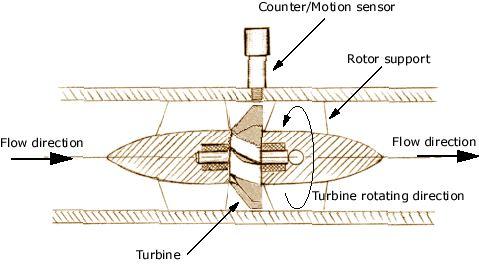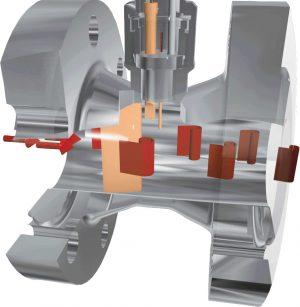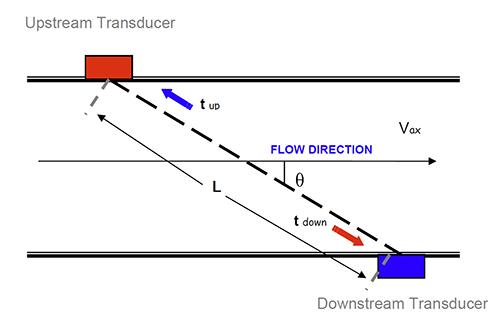So how do water flow meters actually work?
A flow meter is a device that will measure the amount of liquid/steam/gas that flows through a pipe. There are several flow water flow meter technologies available to choose from, choosing the right flow meter will depend on the measurement application, maintenance requirements and the big one - budgetary considerations.
There are four primary types of flow meters:
- Mechanical flow meters
- Vortex volumetric flow meters
- Ultrasonic flow meters
- Magnetic flow meters.
You can learn more below about each of the flow meter types and then select the right water flow meter for your application.
Mechanical flow meters
The most common and economical type of water flow meter are the mechanical types of water flow meters which measure flow through turbine rotation with a propeller, shunt or paddle wheel design. These mechanical water flow meters work by measuring the speed of flowing water running through the pipe that causes a turbine or piston to rotate. The volumetric flow rate of the water is proportional to the rotational speed of the blades. The downside with mechanical water flow meters for water measurement is that they may clog up when the water is dirty or has larger particles which increases maintenance costs. Mechanical water meters also don’t work well with a low flow of water.

Vortex flow meter
Vortex water flow meters use vortices shed from a sensor immersed in the flow. Vortices are forces of nature, “swirls” formed as a fluid moves past an obstruction, like water flowing around a rock in a stream or the wind past a flagpole. In a vortex meter, a sensor tab flexes from side to side as each vortex flows past, producing a frequency output that is directly proportional to the volumetric flow rate. Multivariable vortex flow meters measure up to five process variables with one process connection: volumetric flow rate, mass flow, density, pressure, and temperature. Insertion vortex meters work well on very large pipes since they can be inserted into the flow by hot tapping with a retractor.

Ultrasonic flow meter
Ultrasonic water flow meters use ultrasound to measure the speed of a fluid flowing in the pipe to measure volumetric flow. In a transit-time ultrasonic liquid flow meter, an ultrasonic signal is transmitted in the direction of the flowing fluid downstream, and then another signal is transmitted against the flowing fluid upstream. In its most basic form, the time for the sonic pulse to travel downstream is compared to the time for the pulse to travel upstream. This differential time is then used to calculate the velocity of the flowing fluid. The meter then uses this fluid velocity to calculate the volumetric flow rate in the pipe. BTU energy measurement can also be derived from the volumetric flow rate and the temperature difference between the hot and cold legs. Clamp-on ultrasonic meters measure water from outside of the pipe by shooting pulses of sound through the pipe walls, so they are ideal for measuring water flow in large pipes and have application flexibility.
 Magnetic flow meter
Magnetic flow meter
Magnetic flow meters use a magnetic field to measure the speed of a fluid flowing in the pipe to measure volumetric flow. They use Faraday’s Law of Electromagnetic Induction. According to Faraday’s Law, when liquid flows through a magnetic field it generates voltage. When the fluid is flowing more quickly, more voltage is generated. The voltage generated is proportional to the movement of the water; electronics process the voltage signal into the volumetric flow rate. Magnetic flow meters have an intermediate accuracy, so they are not suited for custody transfer applications and cannot work on pure water since there are no ions to measure.

Choosing the best type of water flow meter for your application will depend upon the precise application.
Parts of this article have been used with permission from Sierra Instruments written by Scott Rouse and published on 27th October 2017.
